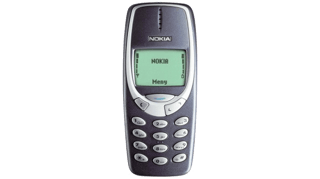Planning for LCD display obsolescence is undoubtedly one of the last things on your to-do list. But how do you know when it’s time to get involved? There are three major signs to look out for that can help you decide.
Longer and/or Unpredictable Lead Times
Through the regular course of business, you may have to endure relatively long lead times. You can try to understand and mitigate them, but sometimes they are unavoidable.
However, if you begin to notice lead times becoming even longer than typical and random, you may have an issue of potential obsolescence. Longer or unpredictable lead times typically relate to supply chain issues with a particular component, or set of components, of the display.
When the global demand for a component decreases, it results in the component being built less often. And eventually, when global demand falls below a certain point, the supply chain will naturally discontinue the manufacturing of that component for economic feasibility, ultimately leading to an end-of-life (EOL) notification and obsolescence.
Despite the volumes for your particular project, if global demand does not support the continuation of production, you may see the beginning signs of obsolescence through these lead-time variations.
Lower Product Quality
Another leading indicator of potential display obsolescence relates to the quality of the product. A significant shift downward in quality may be an indicator of upstream supply chain challenges.
This is most commonly due to the upstream manufacturer transitioning to a new product and, subsequently, no longer expending the necessary resources to support the older, more mature product lines.
Another reduction in quality causation could be that the manufacturer is struggling financially, which could indicate they may close the product line or cease operating completely.
In either case, a change in quality may be a leading indicator of forthcoming LCD display obsolescence.
Industry Trends and Shifting Technology
The last sign your display may be facing obsolescence involves the industry as a whole. As technology evolves, the industry will shift away from older technology. If there’s no longer a cost or performance advantage for the mature technology, there will no longer be a viable market and that technology will become very expensive or obsolete.
A great example of this relates to LCD backlights. By 2000, the improved cost and performance of white LEDs surpassed the long CFL bulbs in small-format displays. Small-format displays all began using the LED backlight instead of small CFL tubes.
This continuance of cost reductions, combined with the improved performance of LEDs, enabled the LED backlight to displace the CFL backlight on larger and larger platforms. Today, all LCD displays—from small format to large, flat-panel televisions—now employ an LED backlight. Any older, small-format or large, CFL-based displays are now obsolete.
The second cause of obsolescence is when market needs shift and result in a dramatic change to the global demand of a particular technology.
For example, in the late 1990s, cellphones transitioned from monochrome to color LCD displays. As a result, the largest display manufacturers (Sharp, Hitachi, Samsung, NEC, etc.) began to exit the monochrome LCD business to focus on the small-format color LCD market. This left behind a wake of obsolete, name-brand, monochrome display configurations.

The cell phone market caused another shift around 2014, when the high-volume cell phone market became dominated by the two main suppliers, Apple and Samsung, and reduced the number of small-platform, color LCD projects available. This drove a big exit of the small-format color TFT manufacturers in this market that had to retool their business model to support the more profitable flat-panel TV market.

What’s Next?
In our vision, there’s a market trend towards OLED displays for TVs and cell phones. But even still, the higher cost of the OLED panel does not quite justify the performance advantages over the existing small-format TFT market. This will change as OLED production increases and OLED costs get closer to that of the TFT equivalent.

Another trend involves wearables which are becoming much more commonplace and are using both OLED and some E-ink technologies. As these displays become more widespread, they will be able to take advantage of the economies of scale and obtain more competitive lower costs.

Stay Informed
The viability of your displays is not permanent, don’t be caught off guard. Stay informed and observant, and look for the signs described above.
Keeping the lines of communication open with your supplier can give you important insights into the lifecycle of your displays. Knowing about obsolescence ahead of time helps you plan your next move, such as stocking and transition strategies to stay one step ahead of the market.
Need a new supplier that understands your unique display needs and can produce custom displays that address them? Let us help. Contact us.





